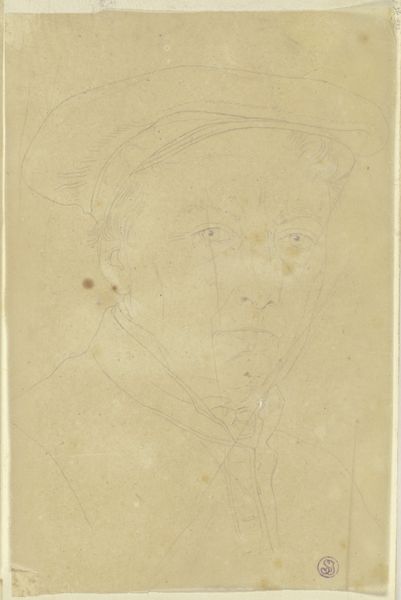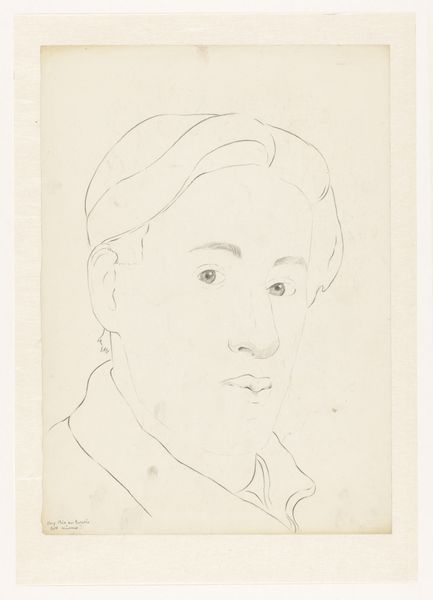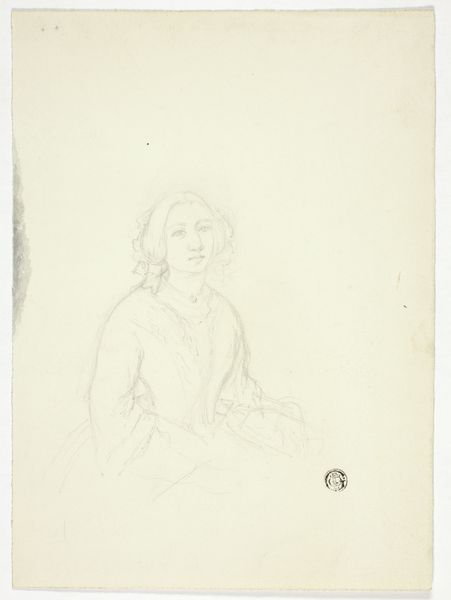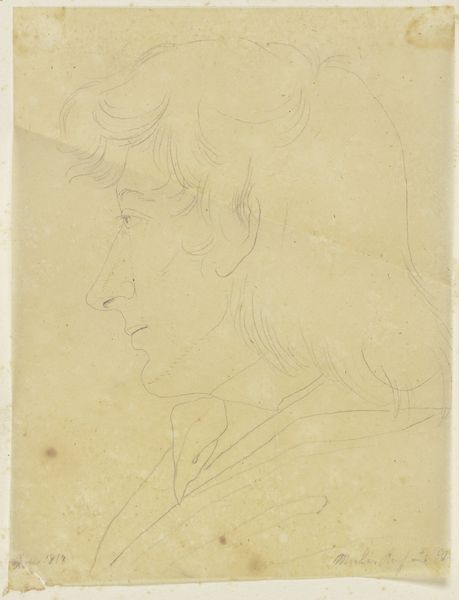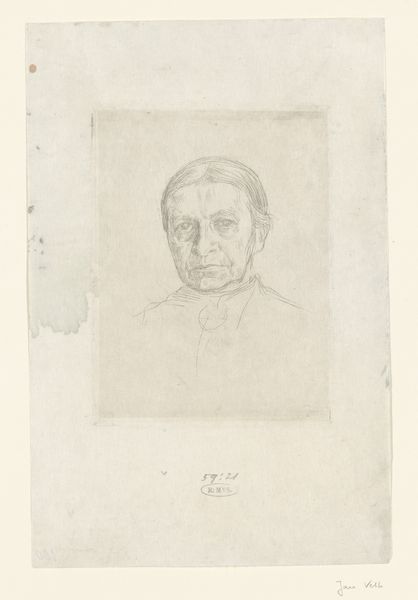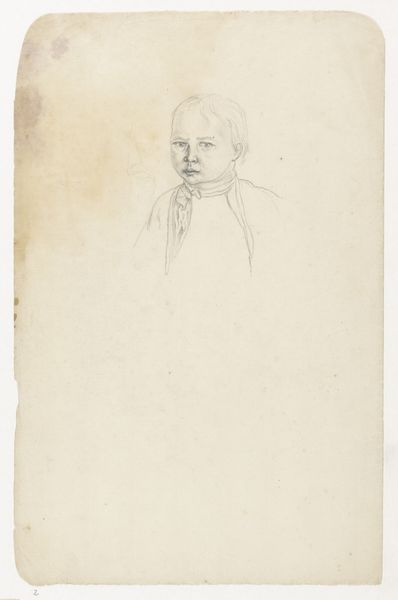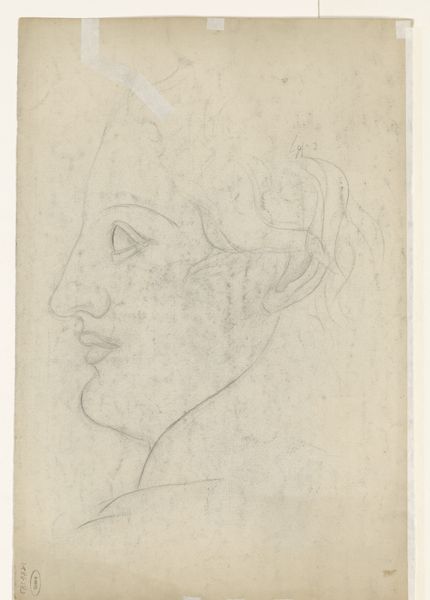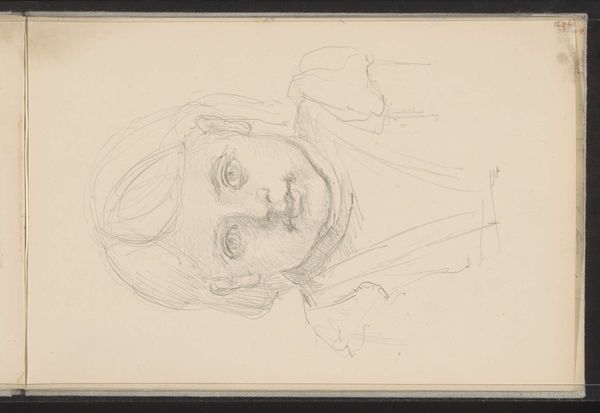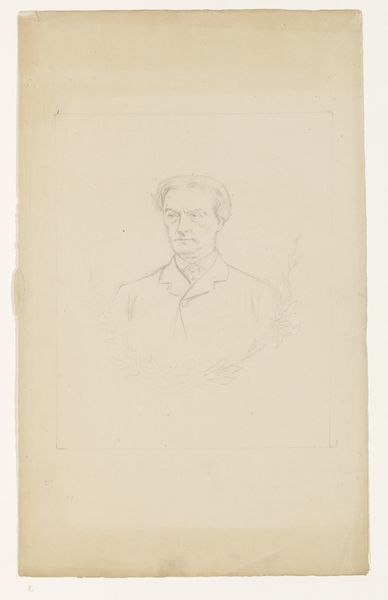
drawing, pencil
#
portrait
#
drawing
#
pencil sketch
#
romanticism
#
pencil
#
academic-art
Copyright: Public Domain
Curator: Let's discuss "Dr. Carl Witt from Berlin," a pencil drawing made sometime between 1817 and 1821, now residing here at the Städel Museum. What are your initial impressions? Editor: I'm struck by its fragile quality, almost ephemeral. The faint lines suggest a fleeting moment, a whisper of a likeness rather than a bold proclamation. It carries a sense of introspection, perhaps melancholy. Curator: The choice of pencil as the medium speaks volumes. Pencil allowed for quick, portable sketching, fitting for the Romantic era's focus on individual expression and capturing fleeting impressions. Think of the accessibility it offered – less cost, less training for those documenting the world around them, compared to, say, oil paint. Editor: Absolutely. Pencil as a medium lends itself to intimacy, revealing nuances of character. The eyes are quite prominent, large and soulful. They draw me in; I see a man of thought and perhaps a bit of yearning. Notice the delicate shading around them – a suggestion of inner depth, amplified by the soft, diffused light. Do you think the subject, Dr. Witt, held a specific symbolic value for the artist, representing the ideals of the Romantic period? Curator: It’s possible, though I lean towards seeing it more as a record of a specific social context. Portraiture at the time served as a crucial tool for constructing social identity. These were markers of status, intellect, connections; not just personal likenesses, but objects embedded in social exchanges. Editor: Yet there is something about the unfinished quality. Look at how the details of his coat are barely suggested, compared to the face. Doesn't this incompleteness point towards a larger symbolism, of the individual’s inherent incompleteness or a focus on internal character rather than external presentation? Curator: I concede there’s room for both interpretations. Perhaps the “incompleteness,” from your perspective, reveals the conditions of its making; the limits placed on an artist, the demands on their time. The materials – the quality of the pencil, the availability of paper – would have inevitably influenced the final product. Editor: That's an interesting way to think of it. Despite our differences, looking closely at this drawing highlights not just its visual elements, but also how art functions as a cultural mirror, reflecting the beliefs and social structures of a specific time. Curator: Indeed. Seeing this work through the lens of process and materials has provided insight into art production during the Romantic era, while your insights illuminate the powerful symbolism within the portrait. Thank you.
Comments
No comments
Be the first to comment and join the conversation on the ultimate creative platform.
